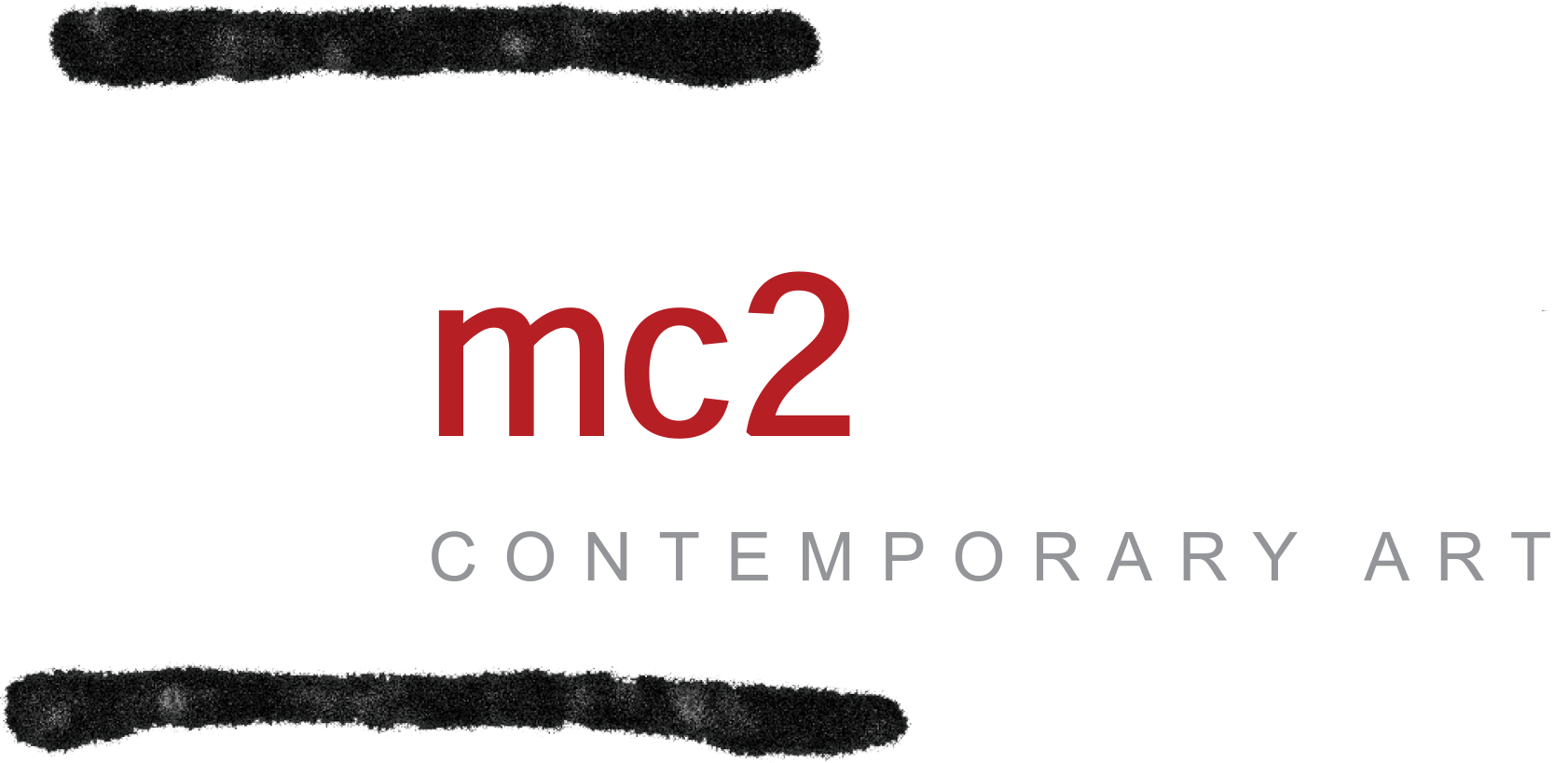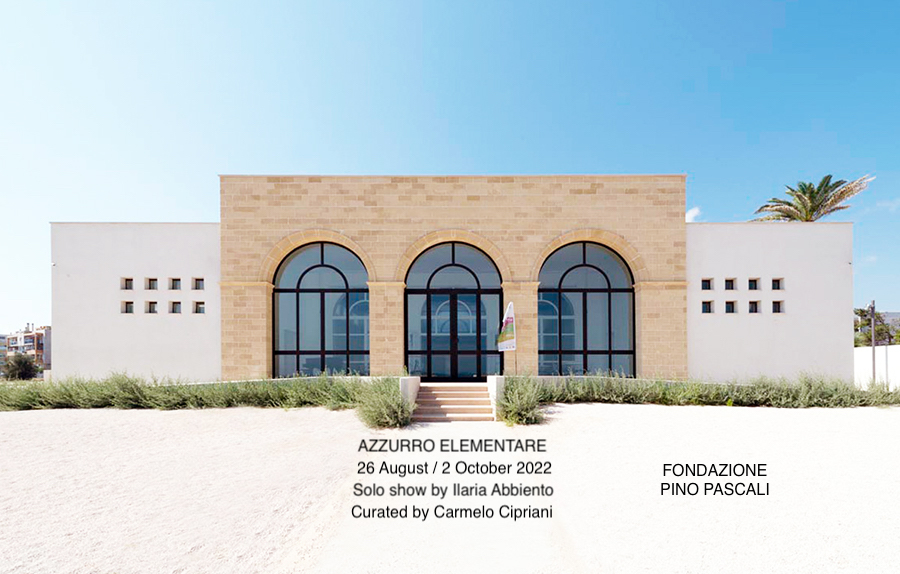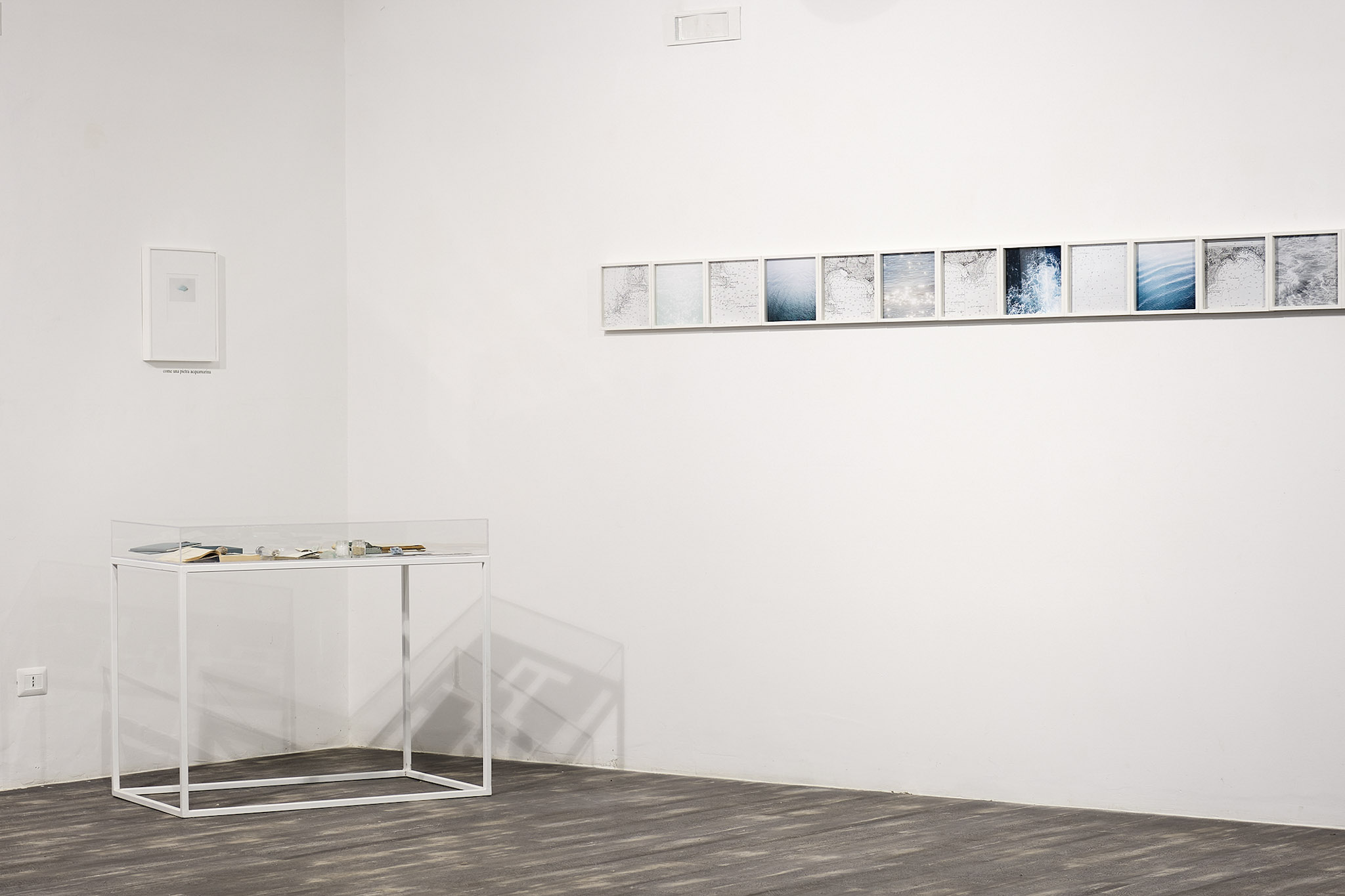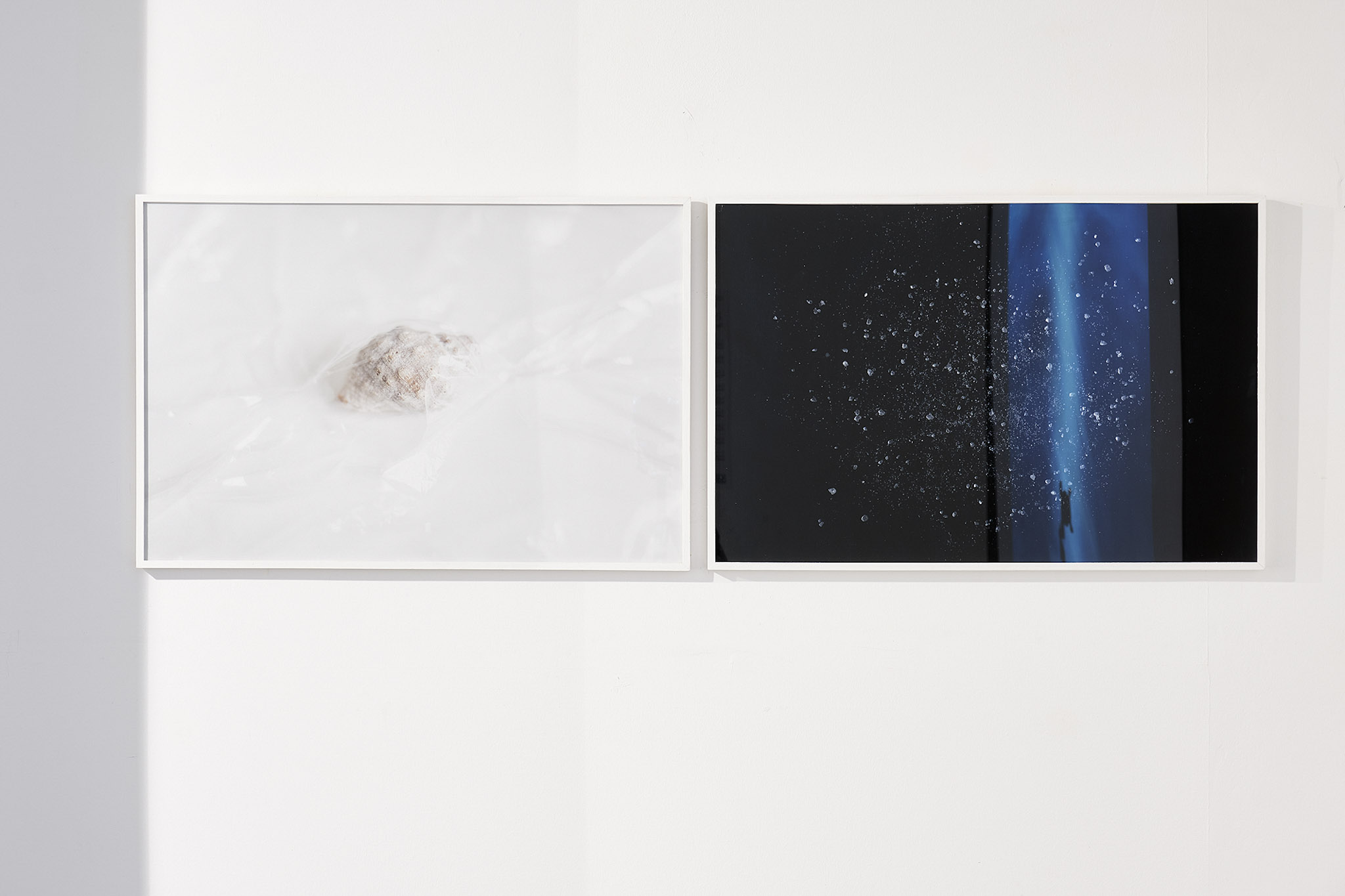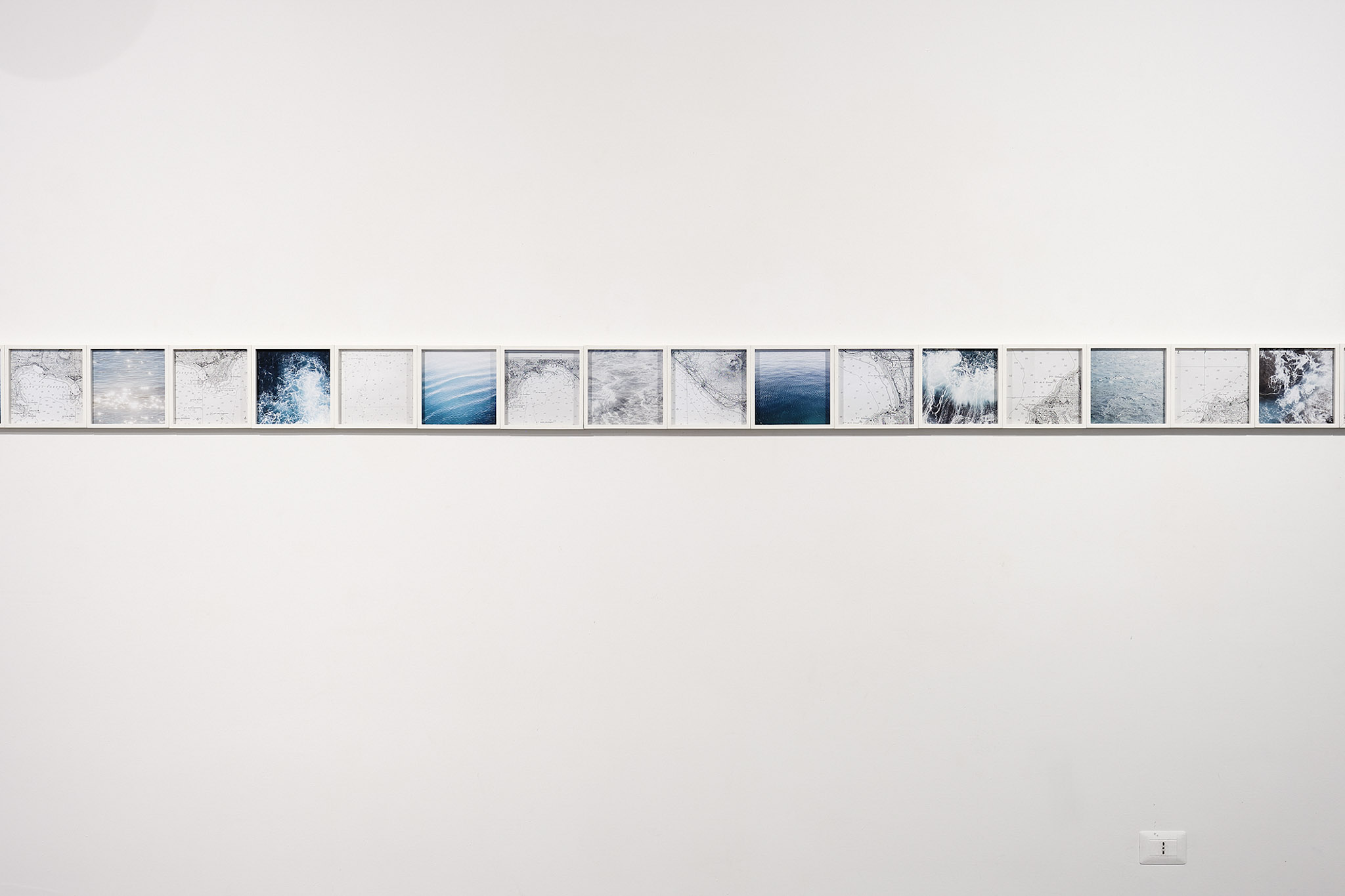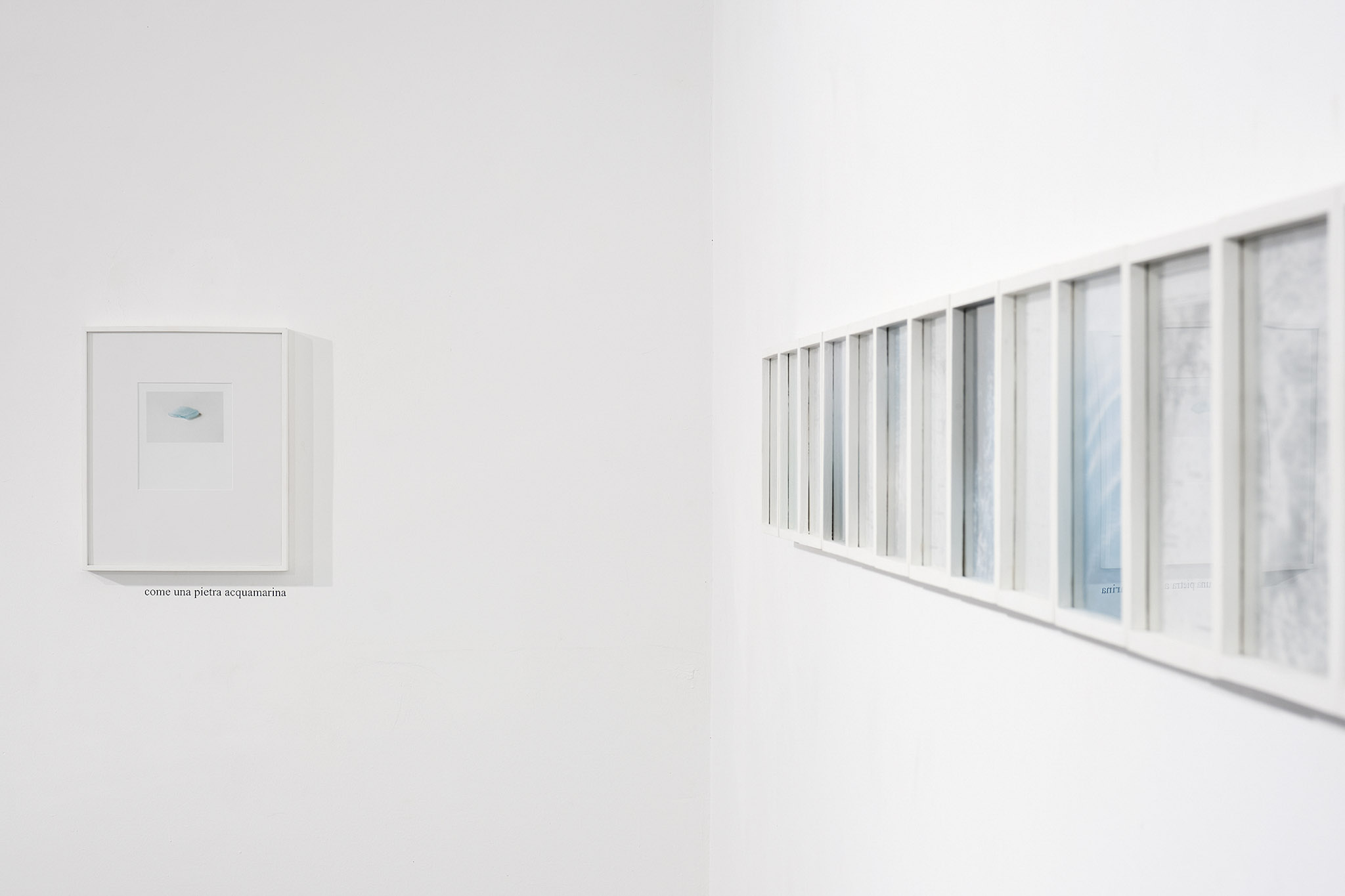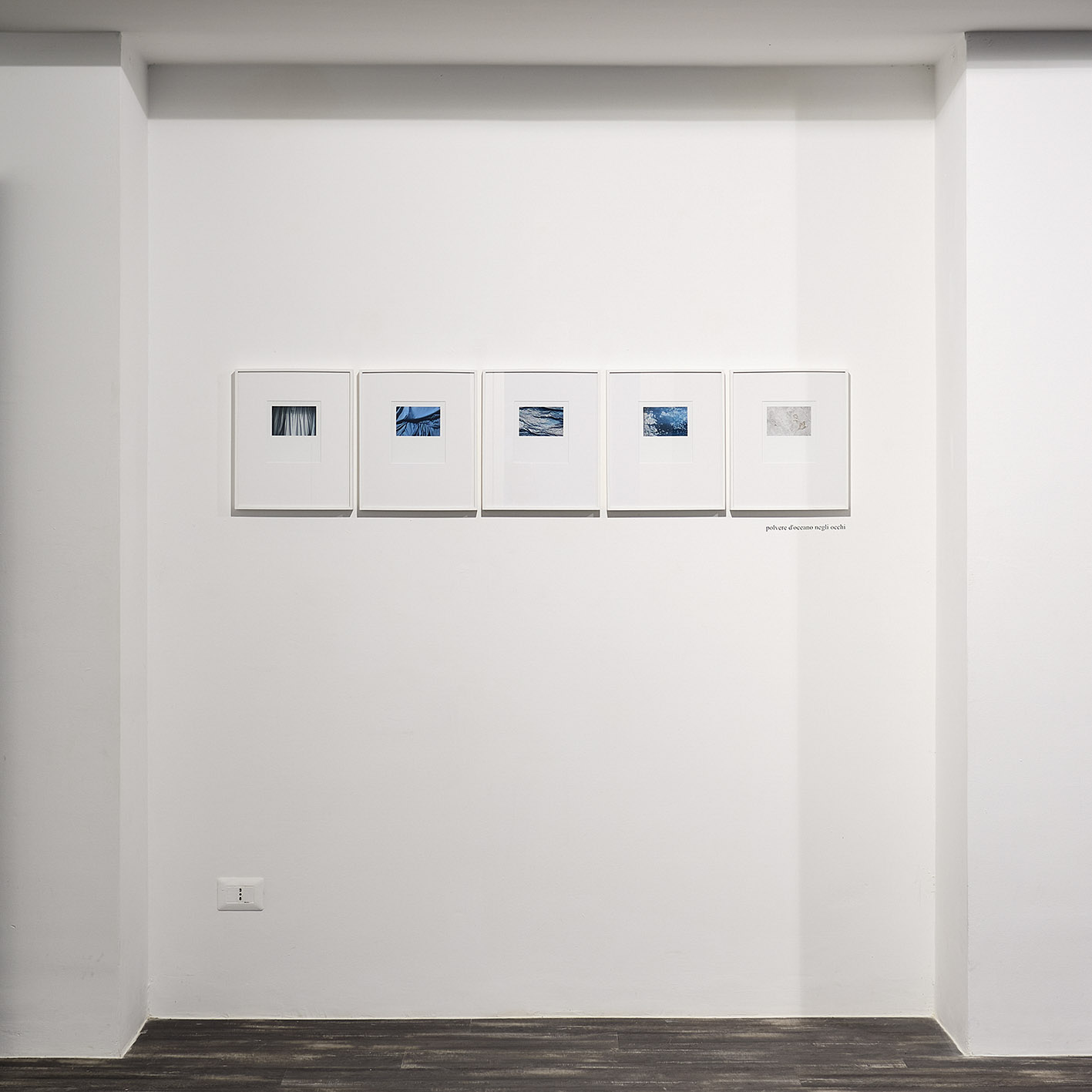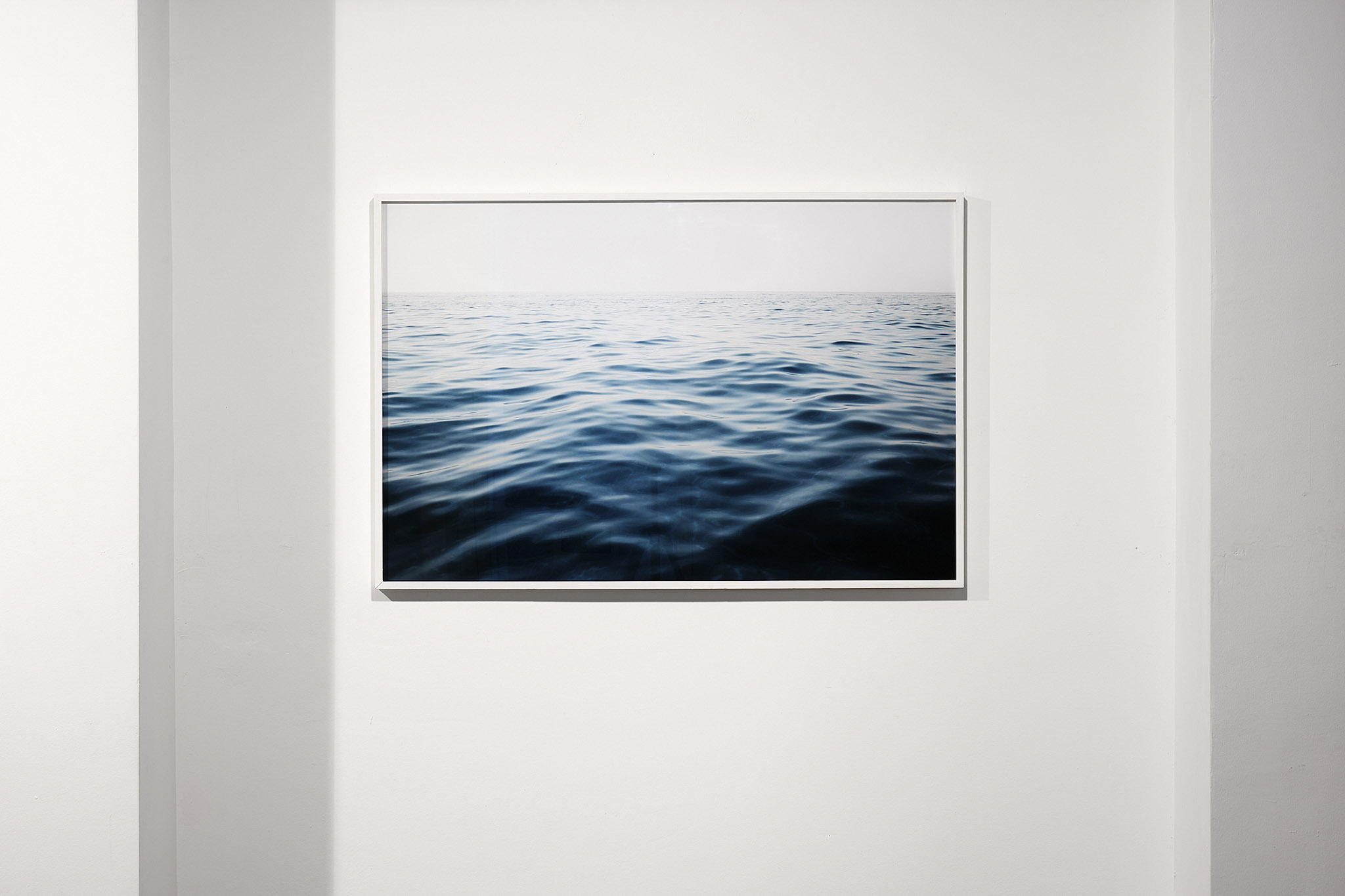THE OCEANIC FEELING OF ILARIA ABBIENTO
In contemporary artistic events, an experience oriented towards linguistic essentialization procedures, formal but also iconographic, often recurs. Not necessarily a volumetric synthesis and a dematerialization of vision but also a reduction of themes, shapes or even colors (Morandi’s bottles or Picasso’s blue and pink periods appear indicative). A phenomenon from which not even photography is exempt, which in the re-proposition of reality, captured in its many facets, places, in part or in full, its very existence. In fact, it happens that even the lens, responding to contingent expressive needs, focuses on a single element, investigates it deeply, capturing all its aesthetic and emotional dynamics. It also happened to Ilaria Abbiento but in her case the contingency became systematic, permanence, lasting over time. For a decade he has been portraying the sea, studying the knowledge linked to it, investigating the coastal landscape and the places that derive identity and subsistence from it. A precise choice of field, made in 2013 when she catches her father and daughter in the act of diving into the sea of Paestum, both caught from behind. That shot generated the work Lido Conchiglia (the title is also the place of shooting), which later merged into Luciano Benetton’s “Imago Mundi” collection: «an instinctive image, of those you don’t think about at the moment, of those that they are snapped with the heart and then remain there indefinitely just like the horizon of the sea. Lido Conchiglia is the beach where my father took me as a child, where I discovered the taste of salt, sand dust and I learned to float, “said the artist. Everything in photography recalls the sea and memory. Thus the two key themes of his poetics meet, one reflected in the other. Until that moment the relationship between the search for him and the sea was not exclusive, soon after it became so. The moment of the shot turned into an inner excavation and looking at the horizon became for her to look inside herself. In that primordial image, in which three generations follow one another holding hands, the artist has rediscovered an entire memorial heritage. Some memories have surfaced in her mind, one in particular linked to her childhood, in which her father, in the act of healing her from a small wound, immersed her in water saying: “Ilaria the sea sanitizes all wounds” . The disinfectant capacity of salt water, in her adult mind, was then transformed into a soothing possibility for the wounds of the soul.
Water, the vital element par excellence, inside and outside the womb, in Ilaria Abbiento’s research changes the origin and purpose of everything, an element in which to find herself, but also her family, her city, her story. The sea is unique to her, iconographically not replaceable with other aquifers such as rivers and lakes. A pantheistic predisposition that she shares with other artists and writers who, before her, have drawn inspiration and knowledge from the sea. Certainly in this predilection of her the being of her Neapolitan must have played a not secondary role. Naples is a city stretching out over the sea, which from the sea derives wealth, resourcefulness, recklessness, practically always, since its foundation, both in reality and in myth. Ilaria Abbiento has the sea inside her, she lives a symbiotic relationship with it, she needs it to carry out what she herself defines as her “blue daily exercise”. The sea is her consolation, her advisor, even her analyst; she scrutinizes it, turns around it, crosses it, photographs it to discover herself. Not an element to be portrayed and described but a subject to be interpreted, transfigured to the point of becoming an existential metaphor. Not only a symbol but also a memorial reservoir, a liquid mirror in which to reflect one’s individuality, letting it flow into collective identity. On the other hand, the sea is a dual element, it leaves you enchanted but you fear it, it unites and divides, it brings wealth and ruin, life and death. “El mar la mar” wrote Raphael Alberti in one of his famous poems, taking up the Hispanic attitude of attributing a double gender to the sea, masculine when it was addressed with fear and reverence, feminine when it was spoken of in benevolent terms, such as in a declaration of love to a woman. It is precisely from the world of poetry that Ilaria Abbiento often draws inspiration but also explanations, a posteriori clarifications of her feelings, reinforcing that idea of identification that, like and before her, involved others.Also for this reason the title of today’s exhibition at the Pino Pascali Foundation is taken from the poem, a path that on the one hand reaffirms its link with the sea, with the other sea, the Adriatic, historically different from “its” sea, the Tyrrhenian, whose waters infuse more easily into the Mediterranean, on the other hand marks its proximity to the Apulian artist, who dedicated one of his most iconic works to the sea. “Azzurro elementare” is the title of the collection by Pierluigi Cappello (1967-2017), a Friulian poet who died too soon. In the chosen title, the reference to the pivotal color of Abbiento’s photography is combined with the essentiality (to be understood as rigor, absoluteness and not simplicity) of his love for the sea, a sort of zero degree of photography, but also of the sentiment it interprets . In Ilaria Abbiento there is strong what Romane Rolland in a letter to Freud defined as an “oceanic feeling”, that is, that particular and often indescribable feeling of belonging to something greater. A parallelism between oneself and the sea that becomes evident in Marosi, a project created for the Pecci Center in Prato. “Marosi” is the wave motion of the sea but figuratively it is also the inner upheaval, the spiritual travail that in this work takes on a natural measurement, forty-eight knots and ninety kilometers per hour, the wind speed measured at sea during the storm.
The sea is a crystalline reality on which the lens affects emotional explorations. Abbiento investigates his inner ocean, relates images with material elements taken as significant objects. He expresses himself with the installation and the video but photography is above all his priority area of investigation, an essential starting point for larger and more complex compositions made with other media. The marine archetype also recurs in the titles of the works, often derived from the geographical or properly marine language: Altante, Mediterraneo, Aquarium, Cartography of the sea, etc. Never a chromatic lighting: the white of the dull surfaces of lighthouses and fishermen’s houses, the dull black, tending to gray, of the orographic trends and of the writings on nautical charts, the brown tones of the stone attenuated as in a state of perennial haze and then above all the blue of the sea, caught and investigated in all its nuances, from the white that lights up in the flashes of light to the intense blue that on the surface suggests abysmal depths, a blue that in some ripples laps the black. A chromatic universe of melancholy and expectation, fully perceptible in Cartography of the sea of 2017, a polyptych in which marine images are combined with those of an ancient nautical map of the Gulf of Naples. One of the most complex and poetic works, an authentic introduction to his narration. The artist retraced the stretches of the coast of his city, “from Monte di Procida to Punta Campanella”, photographically noting the image, not the jagged one of the land, but that of the sea, in a vision restricted to its surface barely disturbed by flashes of light reflected in it. The water changes, direction for the currents, color for the climate, aspect for the mood of the person who portrays it. As in an ancient pilot book, the artist retraces the places to investigate her life space but also herself. The real maps overlap and merge with the inner geography. The combinatorial (and manipulative) practice that makes her a conceptual artist rather than a photographer in the sensu stricto, becomes even more evident in Aquarius, a multi-material installation in a display case from 2021, in which the sea is recalled by metonymic. With almost taxonomic expertise, the artist contains the marine element not directly but alluding to it, to its appearance and its consistency, in an object poem similar to a rebus but also to a diary in which, with full title, together with shells and stones, also the poetry of Cappello lives on. And it is a diary, not only metaphorical, also Notebook of an island, a photographic work created in 2019 during the Photosolstice artist residency, on the island of Asinara, in Sardinia. The artist’s task was to draw a visual map of the island, but she drew her cardiogram from it, a scriptural and visual survey of her soul. “Upon returning from my trip – she wrote – observing the images I had collected and the notes written in the notebook, I realized that I was the island I was contemplating”.
By photographing the sea with punctuality and rigor, the artist shows us how partial our knowledge is. We scrutinize it many times, we immerse ourselves, we perceive it by touch, by taste, by smell, but in fact we do not know it. The image of him always appears to us the same and yet it is always mobile, just as our place before it is constantly changing. A sense of serenity always shines from his works, hinting at the profound meditation that is at their origin, performed alone, through patient observation, in moments of stay in Naples or during more or less long periods of residence in seaside resorts, all I spent away from the summer roar, in an attempt to gain a greater empathy with the place and with what it can offer, in terms of landscape authenticity but also emotional. Ilaria Abbiento crosses the territory, lives it daily, experiences it, investigates the physical space, to discover herself, as in Atlante, a 2017 work exhibited at the Vallicelliana Library in Rome, in which the parallelism between the placid surface of the water and the terrestrial crimping translates into vision the dichotomy between inner navigation and the sufferings endured in what Mariangela Gualtieri called “the hard training of earthly pains”. A crossing not interrupted even by the pandemic. The period of closure and isolation, made even more difficult by the death of his father, served the artist to lead the exploration of the self even more in depth. The memory of the parent and the silence that comes from the city, from Naples, always emphatic and joyful, has given rise to new memorial re-enactments, one of which has been transformed into Teorèma Celèste of 2020. The artist remembers when her father carried her on the terrace to see the stars and in front of the firmament he said to her “one day we will become stars and that is where one day we will meet again”. The death of his father opens the celestial dimension to the artist, which is also a territory to be explored in both geographical and emotional terms. The sea is associated with the sky, the first is material to which the artist has given her heart, the second is the space where the father now rests, one and the other united in a perfect encounter. In the video you can hear background noises, sounds that are not clearly distinguishable but in perfect harmony with the placid and poetic image of the sea surface. Surprisingly, we learn that these are the noises recorded by NASA in space. Passed to the sifting of memories, marine depths and cosmic infinity meet and discover each other unexpectedly close.
Carmelo Cipriani
